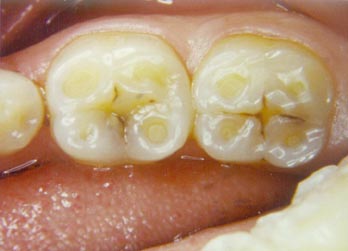When I was 5, I diligently picked my toothpaste based on the number of pink sparkles in the paste. When I was 10, I valued the importance of cartoon characters endorsing the paste. When I was 15, taste was important. At 20 (being a starving college student), I bought the cheapest toothpaste.
If there's anything I've learned through my training as a dentist and personal patient experiences, it's that not all toothpastes are created equal. While I can write pages upon pages about the toothpastes available on the market, I have decided to focus on concerns that many of my patients have and what toothpastes I would recommend for each.
- Sensitive Teeth: Sensodyne is my go-to choice for sensitive teeth. Sensitive teeth are usually the result of exposed dentin (i.e. the inner layer of the tooth) which is a very porous surface. As these pores are exposed to temperature changes/air/etc., they activate the nerves in the tooth, which causes sensitivity. Sensodyne works by blocking these pores and protecting the tooth (namely through the potassium ions from the 5% potassium nitrate). As a plus, this desensitizing toothpaste also contains fluoride to help remineralize teeth and prevent cavities.
- Canker Sores: Tom's Gentle and Clean would be my choice. One of the ingredients in most toothpastes is Sodium Lauryl Sulfate (SLS). This ingredient a) increases the effectiveness of fluoride (which works better in combination with this surfactant), b) helps "foam" the toothpaste to clean plaque away and c) has some anti-bacterial properties. However, some patients have sensitivity to SLS, which may irritate tissues and cause canker sores. If you find this to be your case, consider switching to Tom's Gentle and Clean (which is a SLS-free toothpaste). Comes in two flavors: peppermint and fennel!
- You Have Lots of Restorations: Crest Cavity Protection (Regular) seems to me to be one of the least abrasive toothpastes available. When there are many bonded restorations (white fillings, veneers, all-porcelain crowns), we want to make sure that a less abrasive toothpaste is used to ensure the integrity of the restoration's margin.
- You Have a Baby: Biotene F1rst Teeth Baby Toothpaste is wonderful apple-banana tasting toothpaste for the little one (three months and older). This all-natural toothpaste does not contain any artificial flavors or preservatives so it's safe to swallow! Note that there is no fluoride in this toothpaste (which has may cause tummy aches if swallowed). However, there are calcium and protective milk enzymes which help keep teeth strong. While this tube is a bit more expensive, it's a great introduction to oral care for your teething one!
- Whitening: Rembrandt (Intense Stain) is a toothpaste that I use in between whitenings to prevent day-to-day stains from food and drink.The ingredient PVP (or Polyvinylpyrrolidone Polymer) is a hydrogen peroxide complex which helps remove and prevent stains on teeth. The trick with whitening toothpaste is to use it consistently. The toothpaste is only effective if you use it every day, twice a day, for several months.
- All Around Toothpaste: Crest Pro-Health product line would be my choice. Reduces cavities, plaque, sensitivity and bad breath. I'm there!
Wishing there were more sparkles in adult toothpaste,
Dr. Lynda Tran
*As the products and research for toothpastes evolve, so will the recommendations. And of course, I am not associated with any of these brands. Please consult with your dentist if you are thinking about switching to a new toothpaste.




















